The z score indicates how many standard deviations a value is from the mean. Notably, if the z score is zero, it indicates that it is on the mean.
If the z-score is positive, the raw score is greater than the mean average. A z-score of +2 implies that it is two standard deviations above the average, for example.
When the z-score is negative, the raw score is lower than the mean average. For example, a z-score of -3 means that the information is three standard deviations below the average.
What does a z score mean?
A z-score means the number of standard deviations a value is from the mean. It tells a lot about a raw score in aspects of its standard deviation unit of distance from the mean.
The Z-score measures how far a given value deviates from the mean. The Z-score, also known as the standard score, is the number of standard deviations above or below the mean for a given data point.
The standard deviation reflects the level of variability within a set of data.
Why is a z score useful?
The z score is useful because it helps us analyze two scores from various normally distributed and determine the likelihood of a score occurring within the normal distribution.
The z-score is especially helpful since it indicates the significance and where the value falls within the dispersion.
Examples of interpretation of z score
What does a z score of -1.3 mean?
A z score of -1.3 means that the value of the z score is 1.3 standard deviation lower than the mean. Notably, if this value is normally distributed, then we can note that the z score of -1.3 lies in the 95th percentile. This can be represented in the graph as follows;
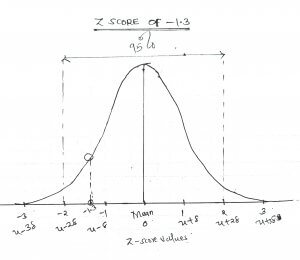
What does a z score of -1.5 mean?
A z score of -1.5 means that the value of the z score is 1.5 standard deviations lower than the mean. Notably, if this value is normally distributed, then we can note that the z score of -1.5 lies in the 95th percentile. This can be represented in the graph as follows;
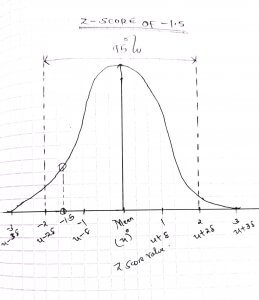
What does a z score of 1 mean?
A z score of 1 means that the value of the z score is one standard deviation higher than the mean. Notably, if this value is normally distributed, then we can note that the z score of one lies in the 68th percentile. This can be represented in the graph as follows;
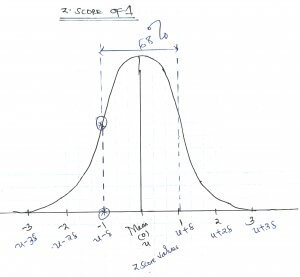
What does a z score of 0 mean?
A z score of 0 means that the value of the z score is on the mean. This can be represented in the graph as follows;
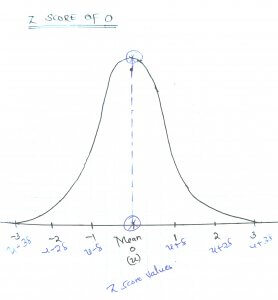
What does a z score of 2 mean?
A z score of 2 means that the value of the z score is two standard deviations higher than the mean. Notably, if this value is normally distributed, then we can note that the z score of 2 lies in the 95th percentile. This can be represented in the graph as follows;
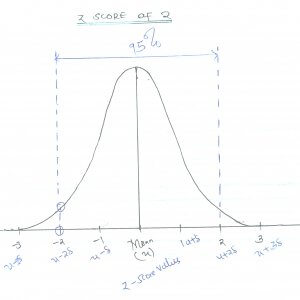
What are z score outliers?
Z score outliers are defined as a z-score greater than 3 or less than -3. The empirical rule can also define the z score outlier.
Arguably, almost all of the data (99.7%) ought to be within 3 standard deviations from the mean. This depicts that 0.3% is an outlier in the data.
Can a z score be greater than 3?
A z score can be greater than 3. You can get the values of the z score up to +4 in the standard normal table.
Can a z score be greater than 4?
A z score can be greater than 4. However, this value is considered unusual. These values are usually not credible for samples of a given size from the normal distribution.
How to Report Z score
Reporting the z score encompasses identifying the population and the data set for which the z score was computed. For instance, we can report that the Z-scores were computed for raw scores by focusing on the test scores.
A z score of +2.5 indicates that it is 2.5 standard deviations above the mean (100). This z score depicts that the student’s mark (150) was above the class average.
